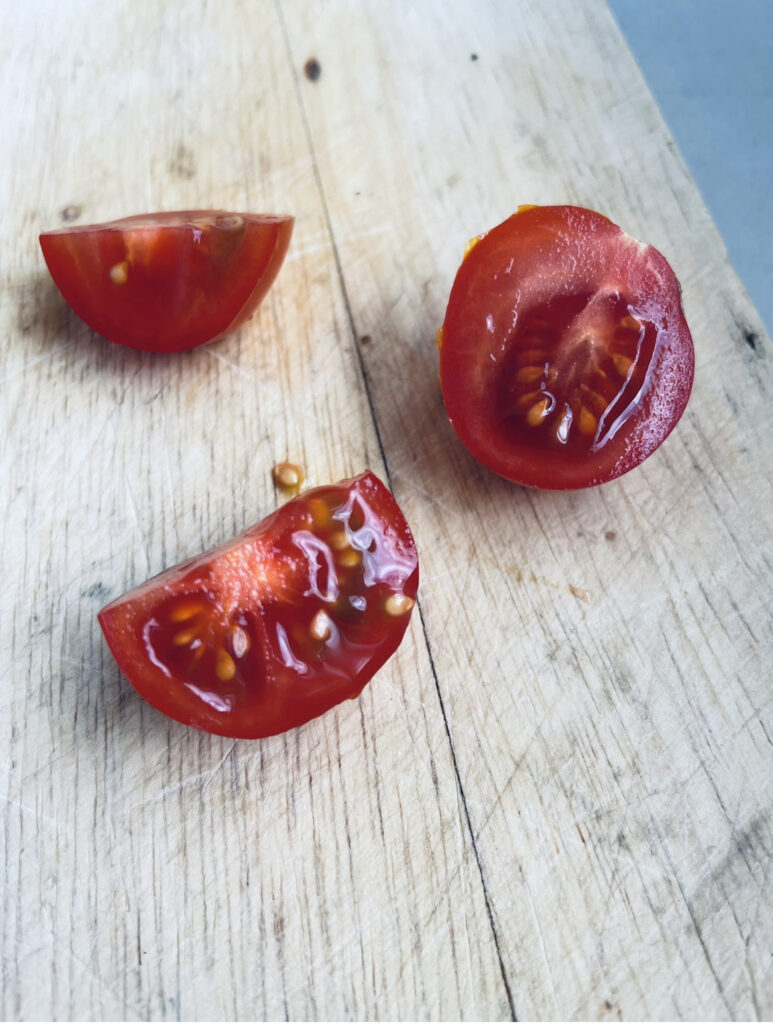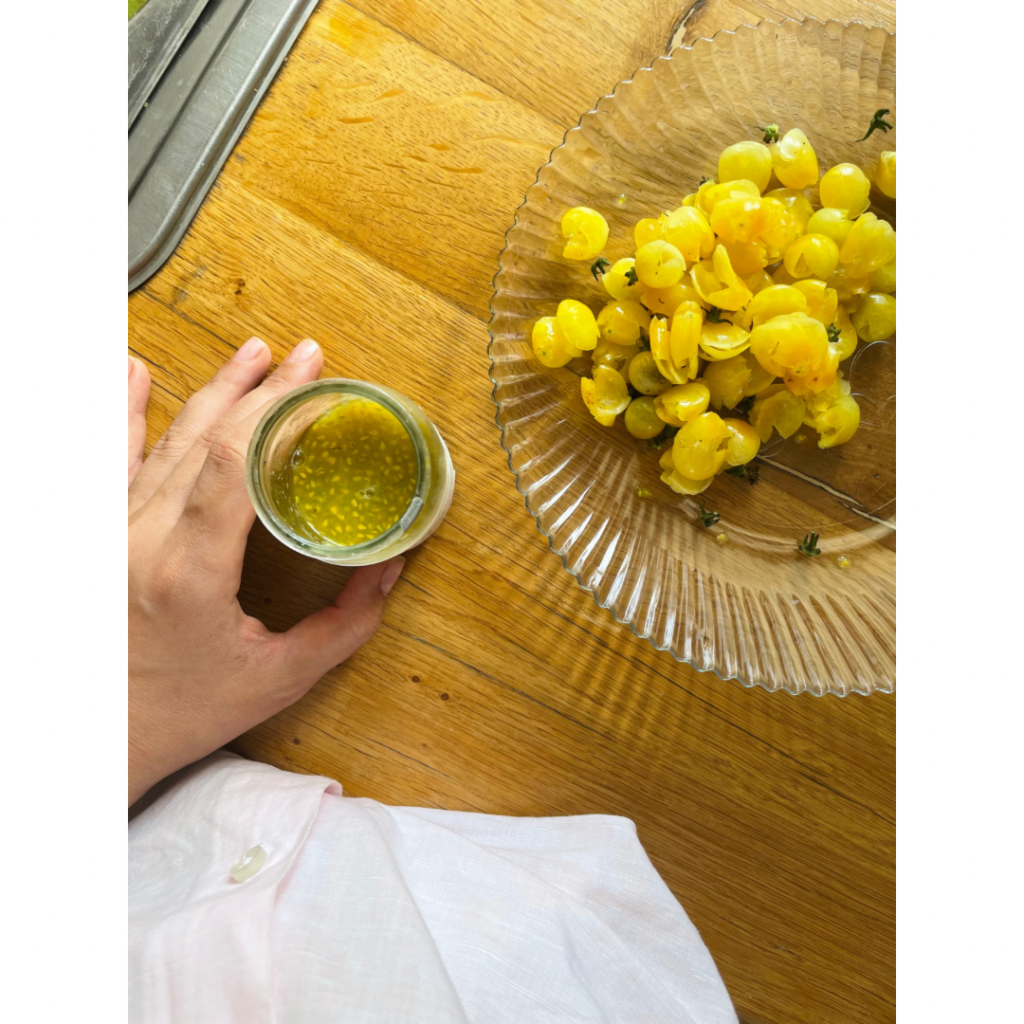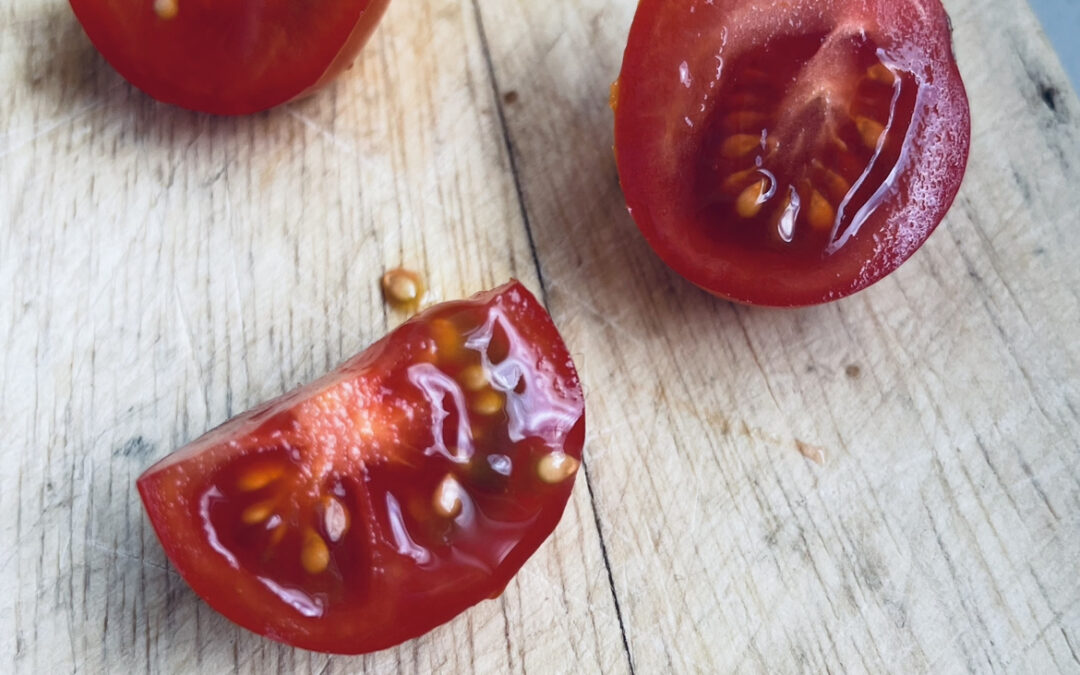I look forward to a new tomato growing season like I look forward to a spring day: with excitement and anticipation:) By the time we reach March, we are busy planning the garden and securing our seed needs. Even though I have enough tomato varieties by any standard, I can’t help but discover new ones. In doing so, I realize that all the seeds I buy are not fermented, just washed.
Before I read about the fermentation technique in the book on tomatoes by Amy Goldman, I remember being fascinated with a behaviour I noticed in cherry tomatoes. If I didn’t pick the small tomatoes on time and they reached full maturity, the plant choked off their only source of nutrients, and the tomatoes ended up on the ground. At first, I thought it was a disease because not all of them manifested this way. After reading about fermentation, I realised that the plant’s gesture is, in fact, a sign that the fruit has reached maturity and that it can now ensure the survival of the genetic material in the next season. The purpose of the plant was achieved.

Once on the ground, the tomato will enter the natural process of decomposition, in which bacteria play a central role. Moist seeds such as tomato, cucumber, or pumpkin have a protective mechanism against prolonged exposure to bacteria that would otherwise consume the seed. This is the transparent gel that we’ve all noticed. Another function of the gel is to preserve and protect the seed until the right conditions for germination reappear.
In high-quality seeds, from our point of view, two characteristics are essential: being disease-free and the germination rate.
The fermentation process kills many of the plant-damaging bacteria that are transmitted through the seed, which is a guarantee that at least the seedlings will be healthy. Regarding germination, in our experience, we have observed that the fermented seeds have a minimum of 90% germination rate, always. In contrast, there were instances when the washed seeds did not even germinate or at a much lower rate. There is a simple explanation for This difference between the two. During the fermentation process, the good seeds reach the bottom of the container, while the seeds that are not fertilized or have other defects remain on the water’s surface.

Though it is a long and smelly process, it is also essential for the quality of Buniol seeds, which can be kept for up to ten years. The cost is we have indeed sacrificed efficiency in seed production. However, we have yet to prove that we can do things better than Mother Nature, so we could imitate her successful ways and go with the most natural processes.
With love for tomatoes,
Claudia


Recent Comments